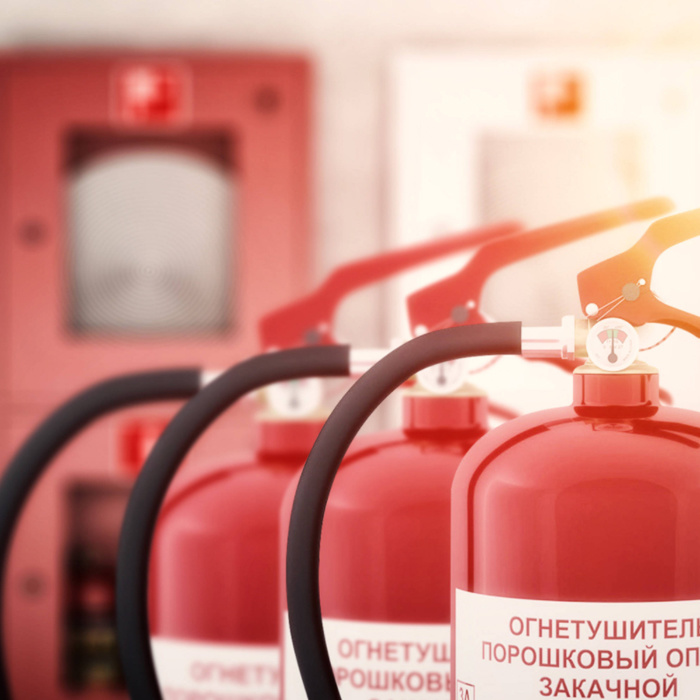
Industry Applications
Firefighting system

The closing element of the fire gate valve is the gate plate, and the movement direction of the gate plate is perpendicular to the fluid direction. The gate valve can only be fully opened or fully closed, and cannot be used for regulation or throttling. The gate plate has two sealing surfaces, and the most commonly used mode has the two sealing surfaces forming a wedge shape, with the wedge angle varying according to the valve parameters, usually at 50 degrees, and for medium temperatures not exceeding 2°52'. The wedge gate valve's gate plate can be made as a whole, called a rigid gate plate; or it can be made to allow slight deformation to improve its processability, compensating for deviations in the sealing surface angle during processing, which is called a flexible gate plate.
Fire gate valves can be classified by the configuration of the sealing surfaces into wedge gate valves and parallel gate valves. Wedge gate valves can be further divided into: single gate type, double gate type, and flexible gate type; parallel gate valves can be divided into single gate type and double gate type. According to the position of the valve rod's thread, they can be divided into exposed rod gate valves and concealed rod gate valves. When the fire gate valve is closed, the sealing surface can rely solely on the medium pressure for sealing, meaning that the medium pressure presses the sealing surface of the gate plate against the other side of the valve seat to ensure the sealing of the sealing surface, which is called self-sealing. Most gate valves use forced sealing, meaning that when the valve is closed, external force is required to press the gate plate against the valve seat to ensure the sealing of the sealing surface.
The gate plate of the fire gate valve moves in a straight line along with the valve rod, which is called a rising stem gate valve (also known as an exposed rod gate valve). Typically, there is trapezoidal threading on the rising stem, which converts rotational motion into linear motion through the nut at the top of the valve and the guide groove on the valve body, effectively converting operational torque into operational thrust.
When opening the valve, when the height of the gate plate lifted equals 1:1 times the valve diameter, the fluid passage is completely unobstructed, but this position cannot be monitored during operation. In practical use, the top of the valve rod is used as a marker, indicating the position where it cannot be moved, which is considered its fully open position. To account for temperature changes that may cause locking, it is common to turn back 1/2 to 1 full turn from the top position to define the fully open position of the valve. Therefore, the fully open position of the valve is determined by the position of the gate plate (i.e., the stroke).
In some gate valves, the valve rod nut is set on the gate plate, and the handwheel rotation drives the valve rod to rotate, thereby lifting the gate plate. This type of valve is called a rotating stem gate valve or a concealed rod gate valve.

COOKIES
Our website uses cookies and similar technologies to personalize the advertising shown to you and to help you get the best experience on our website. For more information, see our Privacy & Cookie Policy
COOKIES
Our website uses cookies and similar technologies to personalize the advertising shown to you and to help you get the best experience on our website. For more information, see our Privacy & Cookie Policy
These cookies are necessary for basic functions such as payment. Standard cookies cannot be turned off and do not store any of your information.
These cookies collect information, such as how many people are using our site or which pages are popular, to help us improve the customer experience. Turning these cookies off will mean we can't collect information to improve your experience.
These cookies enable the website to provide enhanced functionality and personalization. They may be set by us or by third-party providers whose services we have added to our pages. If you do not allow these cookies, some or all of these services may not function properly.
These cookies help us understand what you are interested in so that we can show you relevant advertising on other websites. Turning these cookies off will mean we are unable to show you any personalized advertising.



Address: 261 High-tech Park South Road, Lun Cang Town, Nanan City, Quanzhou City, Fujian Province
Telephone:0595-29880666
Fax:0595-86181291
Website:www.fjspfm.com
E-mail: fjspfm@163.com
COPYRIGHT©2022 Fujian Shenpai Valve Manufacturing Co., Ltd ALL RIGHTS RESERVED.

